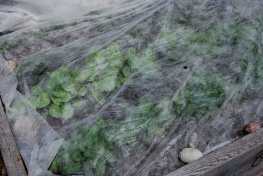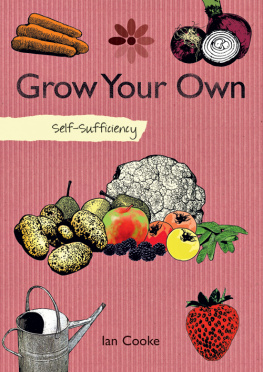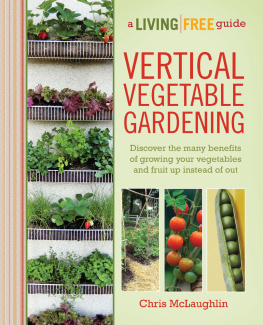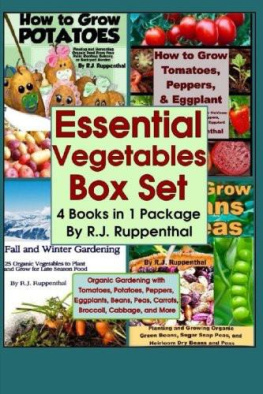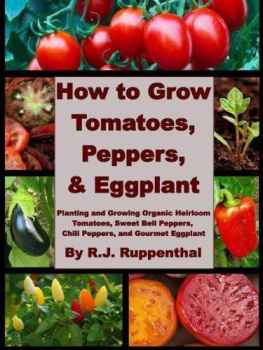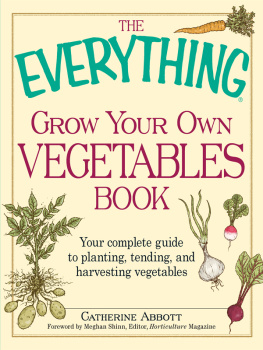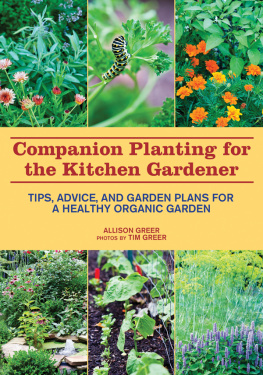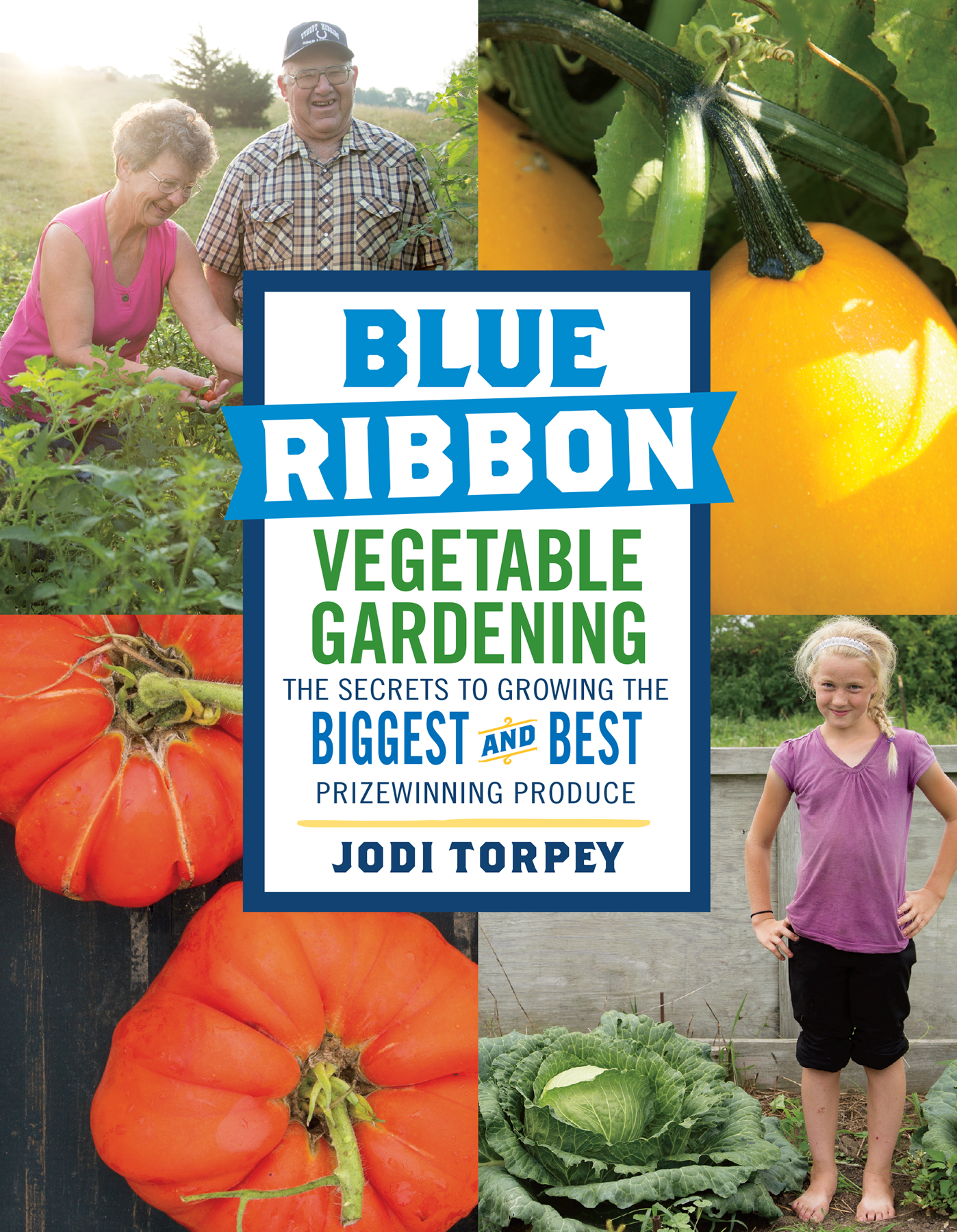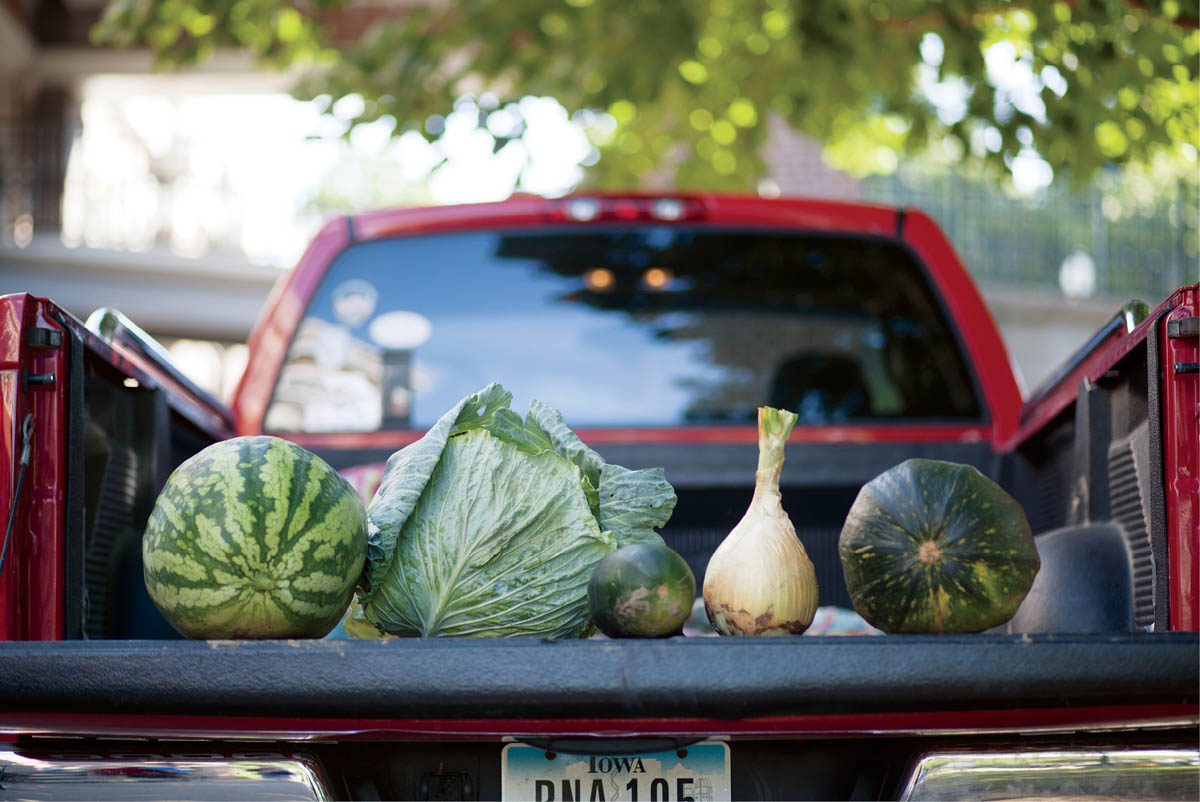Contents
Preface
One of the highlights of summer for this city kid was an annual trip to the Colorado State Fair. While my friends spent their time (and money) at the midway, I was content to wander through the animal barns. I daydreamed about owning a lop-eared bunny, taking care of a pet chicken, and raising a Shetland pony in my suburban backyard. I also spent a lot of time in the Creative Arts building admiring the blue ribbons attached to charming quilts, hand-painted china, and jars of soldier-straight green beans.
I really wanted to win one of those beautiful blue rosettes, but I didnt have the patience for quilting, and I knew I could never learn to paint a perfect rose. However I did know a little something about vegetables.
The first time I won a blue ribbon for some of my homegrown veggies, I had an unexpected emotional response. I still recall the precontest butterflies, hoping that one of my entries might catch the judges attention and the resulting delight when my sweet basil, hot peppers, and cherry tomatoes all gained a top prize. I remember that day like it was yesterday.
Thats because it was. After growing vegetable gardens for more than 30 years, I entered my first horticulture competition in 2012. Thanks to good gardening weather, I was able to take three entries to a county fair. Thanks to beginners luck, I came home with three satin blue ribbons. My exuberance caused one of the fair clerks to say, Next year you can enter more.
Thats what Im still afraid of. Ive heard about home gardeners entering a vegetable competition one year just for the fun it and then becoming obsessed with growing bigger and better the following year. An enjoyable hobby can become a year-round preoccupation to unlock gardenings secrets and fine-tune every part of the growing process. As one gardener said after his initial success, I havent had a holiday since.
But if youre a gardener whose feet are firmly planted on the ground, youll find that growing vegetables for competition injects new joy into your gardening efforts. Youll also join a long line of farmers and gardeners who began exhibiting at agricultural shows almost as soon as the first events took root.
Competitive gardening is similar to other competitive sports. Medals, ribbons, and prize money are nice, but gardeners enter their vegetables in contests for the pleasure of seeing how their skill stacks up against the competition. They also get validation for the personal accomplishment of growing something wonderful from a handful of seeds.
This book is for gardeners of all skill levels who want the competitive challenge of growing prizewinning produce. It includes everything you need to know about the horticulture competition process, from locating contests and studying the rules to tips for thinking like a judge.
I wrote this book for another type of gardener, too for growers whod simply like to find ways to improve their vegetable gardening efforts. The tips in this guide are equally useful for those whod like to harvest high-quality produce for eating instead of competing.
The first chapter surveys the history of this sport. Reading about gardening in the old days gives you a window into what interested gardeners most at that time. Learning how agricultural exhibitions evolved in England, and how American horticulturists worked to catch up, will connect you with the wonderful tradition of entering vegetable contests.
Chapter 2 gives you the nitty-gritty details of how to enter a vegetable competition. It covers the basics of growing for competition, how to prepare your produce for the contest, and helpful hints on what judges are looking for in prizewinners.
The remaining chapters tell you how to grow champion produce. Each covers one of the top 10 fruits and vegetables entered in contests today. I chose these because theyre some of the most popular edibles gardeners grow. Plus they can be planted just about anywhere, from large farm gardens to small urban plots and balcony and patio containers or wherever an industrious gardener can find a sunny spot.
I hope youll enjoy the historical quotes, anecdotes, and gardening trivia planted throughout each chapter. Its easy to take for granted our garden-grown vegetables, but each traveled its own road to get to our tables and all deserve to be celebrated. As Evelyne Bloch-Dano wrote in Vegetables: A Biography, Because vegetables connect us to the earth... they occupy a very specific place in the history of food, as well as in our imaginations, our myths, our customs, our family heritages.
While researching and writing this book, I visited pumpkin patches of astonishing proportions, got lost among the pages of old gardening books, watched giant vegetable weigh-offs, and competed at state and county fairs. I even won a few blue ribbons in the process.
I cant promise youll gain fame or fortune by entering your homegrown vegetables in a contest, even if you follow every strategy. What I can promise is that youll have a bit of fun, meet some interesting folks, and gain a new appreciation for the traditions of our countrys rich agricultural heritage. If you need a simple mantra to encourage you to plant a prizewinning garden, remember this: Seeds want to sprout; plants want to grow.

The Schnicker family of Mt. Pleasant, Iowa, grows giant vegetables each year for the Iowa State Fair.
Chapter 1
The Competitive Legacy
You know you grow great tomatoes. Your family knows you grow great tomatoes. Heck, even your neighbors cant wait to get their hands on your garden-grown goodies. So why not take your best vegetables to the fair for some official accolades? Like the fairs other competitive events, a vegetable competition is a challenging opportunity to walk away with ribbons and some prize money. If you happen to have a natural competitive spirit, the bragging rights alone may be the best reward of all.
Its as much fun as a Ferris wheel to enter a vegetable contest and be part of the excitement of a fair. In the days leading up to a contest you have to balance nervous anticipation with the daily gardening routine. Gardening for competition requires monitoring progress, dealing with wild weather, making adjustments, and trying to outsmart Mother Nature. Then, finally, comes the exhilaration of the actual event.
Winning ribbons for picture-perfect produce is a splendid reward for a season of working in the garden, but you can win prizes for oddball vegetables, too. One time I was tickled to take home the top prize for funniest mutation in the novelty vegetable class. Two of my tomatoes had grown together to form a perfectly round miniature derrire. I titled my winning entry How I Got a Little Behind in My Gardening.


